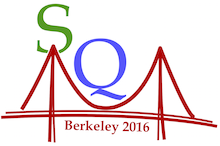Speaker
Description
Heavy quarkonia are an essential probe in understanding the properties of the quark-gluon plasma (QGP) formed
in relativistic heavy-ion collisions. The suppression of $J/\psi$ in the medium due to color-screening has been proposed
as a direct signature of the QGP formation.
However, its production mechanism in p+p collisions have not been fully understood despite of decades of efforts,
which warrants more measurements. Moreover, the contribution from regenerated $J/\psi$ by the coalescence of
uncorrelated $c$ and $\bar{c}$ quarks in the medium can add an additional complication to the interpretation of observed
$J/\psi$ suppression in Au+Au collisions. Precise measurements of $J/\psi$ production in p+p collisions, and the nuclear
modification factor ($R_{AA}$) and elliptic flow ($v_2$) in a wide $p_T$ range in Au+Au collisions, can help better understand
different production mechanisms in such collisions. On the other hand, $\Upsilon$ states are cleaner probes
since the regeneration contribution is negligible at RHIC energies.
The newly installed Muon Telescope Detector, which provides muon identification capability at mid-rapidity, opens the door to
measure quarkonia via the di-muon channel at STAR.
In this talk, we will present (1) measurements of $J/\psi$ production in p+p collisions at $\sqrt{s}=500$ GeV sampled during RHIC 2013 run,
including its cross-section and yield dependence on event multiplicity; (2) measurements of $R_{AA}$ and $v_2$ of $J/\psi$ , and the production
of $\Upsilon$ states in Au+Au collisions at $\sqrt{s_{NN}}=200$ GeV, based on the full data sample taken in RHIC 2014 run.
| On behalf of collaboration: | STAR |
|---|
